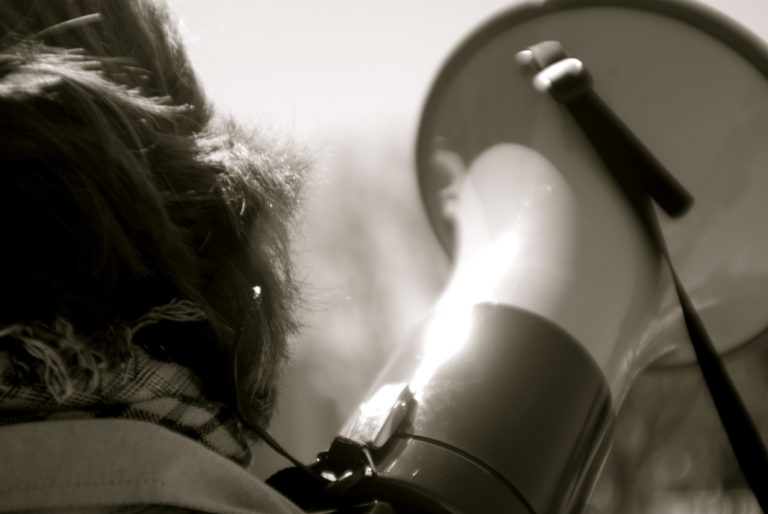Originally published in the Summer 2018 MLA Newsletter
The term public humanities emerged shortly after the National Endowment for the Humanities was established in 1965. Initially, public humanities programs were the province of professionals outside the academy who led entities like state humanities councils and recruited academics who were willing to translate their scholarship for wider audiences. By the mid-1990s, academic humanists began creating their own mechanisms for engaging with wider publics. Imagining America, which fosters public engagement with the humanities, was established in 1999, and by the early 2000s some universities began offering degrees in public humanities.
The practice of making humanistic knowledge more accessible has been with us for a half century, but it takes on new urgency in today’s context. As the total number of undergraduate enrollments has increased, the relative number of students completing degrees in English and in languages other than English is at a historic low (Laurence, “Decline”). Jobs for PhDs in both English and languages other than English have been declining steadily for a decade and in 2016–17 were lower than at any time since 1975, when the MLA first began tracking these numbers (851 in English and 808 in other languages [Report 1]). The gap between PhDs conferred and jobs available keeps increasing. In 2016, for instance, 756 individuals earned doctorates in American and British literature (Doctorate Recipients, data table 13), while only 359 jobs were advertised in these fields (Report 29). The only academic-employment categories showing significant growth since 1995 are administration and non-tenure-track, both full- and part-time (Laurence, “Employment Trends,” fig. 5).
These data may seem abstract unless you are the new PhD who cannot find work or the untenured lecturer who is not rehired because a course didn’t attract enough enrollments, but these numbers also drive policy decisions that have more tangible effects. Governors of several states have recommended cuts in the humanities and favored majors that offer clear career pathways, and administrators at a number of universities have followed such recommendations. The University of Pittsburgh cut programs in German, classics, and religious studies; the University of Southern Maine eliminated offerings in French and consolidated English, philosophy, and history into one department; and the University of Wisconsin, Stevens Point, recently proposed creating a “different kind of university” by eliminating majors in, among others, American studies, English, French, German, philosophy, and Spanish while adding programs of study in chemical engineering, fire science, and marketing (Flaherty). On many campuses, smaller but equally invidious decisions—such as substituting the BS for the BA because it eliminates the language requirement or shifting a vacated tenure line in a humanities department to a STEM department or professional school—chip away at the humanities. All of this, combined with an environment in which college is seen as a private commodity rather than a public good and a sizable portion of the population believes that higher education is not good for the country, shows the necessity of making the value of the humanities even more visible.
Doubling down on previous initiatives offers one way to respond. Service learning, as Marcy Schwartz explains, connects humanists with local communities and in the process gives literary and literacy studies a wider audience while providing undergraduates opportunities for reflection and civic awareness. Imagining America engages publics by uniting culture and participatory democracy. Books@Work, a nonprofit organization that hires professors to lead literature discussions in workplaces and in communities, gives nonacademic readers access to creative expressions along with new perspectives on their own lives. The alt-ac movement, through initiatives like the MLA’s Connected Academics and department-sponsored internships for graduate students, links the academy with the public square.
Projects like these merit emulation, but the urgency of the present moment requires us to do more by seeking control of the discourses surrounding the humanities. The OpEd Project, which offered a workshop at the 2018 MLA convention, can help us learn to convey our messages more effectively both locally and nationally. Humanities in Five, an innovative session planned for the 2019 MLA convention, will feature colleagues talking without notes in accessible language about their work. Creating public syllabi like Black Womanhood, which has been taken up by several individuals and organizations, breaks down the classroom wall so that those outside the academy can read along with us. Projects like these offer models for public discourses that describe the humanities in our words.
Works Cited
Doctorate Recipients from U.S. Universities, 2016. National Science Foundation, Dec. 2017, www.nsf.gov/statistics/2018/nsf18304/.
Flaherty, Colleen. “A Different Kind of University.” Inside Higher Ed, 13 Mar. 2018, www.insidehighered.com/news/2018/03/13/faculty-members-wisconsin-stevens-point-react-plan-cut-13-majors.
Laurence, David. “The Decline in Humanities Majors.” The Trend: The Blog of the MLA Office of Research, Modern Language Association, 26 June 2017, mlaresearch.mla.hcommons.org/2017/06/26/the-decline-in-humanities-majors/.
———. “Employment Trends.” The Trend: The Blog of the MLA Office of Research, Modern Language Association, 17 Nov. 2016, mlaresearch.mla.hcommons.org/2016/11/17/trends-in-the-higher-education-workforce/.
Report on the MLA Job Information List, 2016–17. Modern Language Association, Dec. 2017, www.mla.org/content/download/78816/2172744/Report-MLA-JIL-2016-17.pdf.
Schwartz, Marcy. “Public Stakes, Public Stories: Service Learning in Literary Studies.” PMLA, vol. 127, no. 4, 2012, pp. 987–93.
